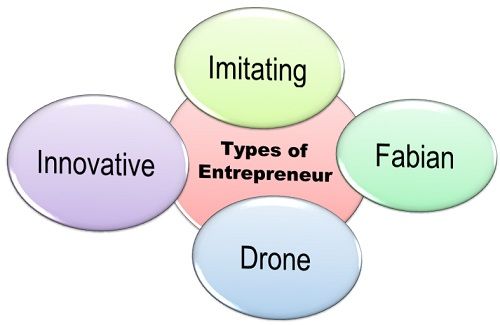Introduction: The Dynamic Realm of Entrepreneurship:
Entrepreneurship, a dynamic and transformative journey, opens doors to a world of opportunities and diverse entrepreneurial archetypes. This comprehensive guide navigates through the intricacies of entrepreneurship, shedding light on the myriad opportunities available and the various types of entrepreneurs shaping the global business landscape.
2. The Entrepreneurial Spirit: Embracing Opportunities:
2.1 Seizing Opportunities: The Essence of Entrepreneurial Ventures At the heart of entrepreneurship lies the ability to identify and capitalize on opportunities. Entrepreneurs are individuals who possess the vision to see potential where others may not, creating innovative solutions and ventures that contribute to economic growth and societal advancement.
2.2 Dynamic Nature of Opportunities: From Problem-Solving to Innovation Opportunities in the entrepreneurial realm are dynamic, ranging from identifying and solving existing problems to pioneering innovations that redefine industries. Entrepreneurs navigate this ever-changing landscape, adapting their strategies to leverage emerging trends and technologies.
3. Types of Entrepreneurs: A Spectrum of Innovation:
3.1 The Classic Entrepreneur: Building from the Ground Up Classic entrepreneurs are the trailblazers who start businesses from scratch. They shoulder the risks, invest their time and resources, and often bring groundbreaking ideas to fruition. These individuals thrive on autonomy and the excitement of building something new.
3.2 Serial Entrepreneurs: Perpetual Pioneers of Innovation Serial entrepreneurs are driven by a perpetual desire to innovate and create. Having tasted success in one venture, they embark on subsequent entrepreneurial journeys, leveraging their experience, networks, and insights to explore new opportunities and industries.
3.3 Social Entrepreneurs: Catalyzing Positive Change Social entrepreneurs are driven by a commitment to address social issues and create positive change. Their ventures prioritize societal impact over purely financial gains, aiming to solve pressing problems through sustainable and socially responsible business models.
3.4 Corporate Entrepreneurs: Navigating Innovation Within Organizations Operating within established corporations, corporate entrepreneurs (intrapreneurs) spearhead innovation from within. They navigate organizational structures, identifying and implementing novel ideas that contribute to the company’s growth and competitiveness.
4. Identifying Opportunities: A Strategic Approach:
4.1 Market Analysis: Unveiling Unmet Needs and Trends Entrepreneurs employ strategic market analysis to identify unmet needs and emerging trends. This involves studying consumer behavior, market dynamics, and competitors, providing a foundation for the development of products or services that resonate with target audiences.
4.2 SWOT Analysis: Assessing Strengths, Weaknesses, Opportunities, and Threats Conducting a SWOT analysis is a crucial step in opportunity identification. Entrepreneurs evaluate their venture’s strengths and weaknesses, while also analyzing external opportunities and threats. This strategic framework informs decision-making and guides the development of a robust business strategy.
5. Pursuing Opportunities: The Entrepreneurial Journey Unfolds
5.1 Business Planning: Crafting a Roadmap for Success Once an opportunity is identified, entrepreneurs embark on the journey of business planning. This involves outlining the venture’s mission, vision, goals, and operational strategies. A well-crafted business plan serves as a roadmap, guiding entrepreneurs through the complexities of starting and growing a business.
5.2 Funding Strategies: Turning Vision into Reality Accessing capital is often a critical aspect of pursuing entrepreneurial opportunities. Entrepreneurs explore various funding strategies, from bootstrapping and angel investors to venture capital and crowdfunding, aligning their financial approach with the scale and nature of their ventures.
Conclusion
Embracing Entrepreneurship and Its Myriad Forms
Entrepreneurship is a multifaceted journey characterized by a dynamic interplay of opportunities and diverse entrepreneurial types. From classic entrepreneurs building ventures from the ground up to social entrepreneurs driving positive change, each archetype contributes uniquely to the entrepreneurial landscape. Navigating opportunities requires a strategic approach, including thorough market analysis and strategic planning. As the entrepreneurial journey unfolds, individuals transform opportunities into successful ventures, leaving an indelible mark on industries and societies worldwide. This guide serves as a compass, guiding aspiring entrepreneurs through the exciting and challenging terrain of entrepreneurship, where opportunities abound and innovation thrives.
Conclusion
In summary, the entrepreneurial landscape is a vibrant tapestry woven with opportunities and diverse entrepreneur archetypes. From classic trailblazers to social innovators and intrapreneurs within corporations, each entrepreneurial type contributes uniquely to the dynamic world of business. The essence of entrepreneurship lies in seizing opportunities, navigating the dynamic nature of the business realm, and embracing the entrepreneurial spirit. Strategic approaches such as market analysis and SWOT analysis guide entrepreneurs in identifying and pursuing opportunities. As individuals embark on the entrepreneurial journey, crafting meticulous business plans and exploring funding strategies, they transform visions into reality, leaving an enduring impact on industries and societies globally.
FAQs
-
What distinguishes social entrepreneurs from other types of entrepreneurs?
- Social entrepreneurs prioritize societal impact over financial gains, focusing on addressing social issues through sustainable and socially responsible business models.
-
How do corporate entrepreneurs contribute to innovation within established organizations?
- Corporate entrepreneurs, or intrapreneurs, navigate organizational structures, identifying and implementing novel ideas that contribute to the growth and competitiveness of the company.
-
What role does market analysis play in identifying entrepreneurial opportunities?
- Market analysis involves studying consumer behavior, market dynamics, and competitors, providing a foundation for developing products or services that resonate with target audiences.
-
Why is a well-crafted business plan essential for entrepreneurs?
- A well-crafted business plan serves as a roadmap, outlining the venture’s mission, vision, goals, and operational strategies, guiding entrepreneurs through the complexities of starting and growing a business.
-
How do serial entrepreneurs leverage their experience in subsequent ventures?
- Serial entrepreneurs, having tasted success in one venture, leverage their experience, networks, and insights to explore new opportunities and industries in subsequent entrepreneurial journeys.

